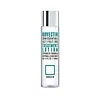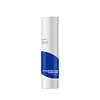What's inside
What's inside
 Key Ingredients
Key Ingredients

 Benefits
Benefits

 Concerns
Concerns

No concerns
 Ingredients Side-by-side
Ingredients Side-by-side

Water
Skin ConditioningGlycerin
HumectantMethyl Gluceth-20
HumectantPentylene Glycol
Skin ConditioningButylene Glycol
HumectantNiacinamide
SmoothingSorbitol
HumectantAdenosine
Skin ConditioningCaffeine
Skin ConditioningSodium Hyaluronate
HumectantAllantoin
Skin ConditioningPanthenol
Skin ConditioningArginine
MaskingHyaluronic Acid
HumectantGlycyrrhiza Glabra Root Extract
BleachingChamomilla Recutita Flower Extract
MaskingCentella Asiatica Extract
CleansingGlycine Soja Sprout Extract
EmollientCarica Papaya Fruit Extract
Skin Conditioning1,2-Hexanediol
Skin ConditioningSodium PCA
HumectantAcrylates/C10-30 Alkyl Acrylate Crosspolymer
Emulsion StabilisingHydroxyethylcellulose
Emulsion StabilisingTrehalose
HumectantSodium Polyglutamate
HumectantHydroxypropyltrimonium Hyaluronate
Hydrolyzed Hyaluronic Acid
HumectantSodium Acetylated Hyaluronate
HumectantPotassium Hyaluronate
Skin ConditioningSodium Hyaluronate Crosspolymer
HumectantDisodium EDTA
Water, Glycerin, Methyl Gluceth-20, Pentylene Glycol, Butylene Glycol, Niacinamide, Sorbitol, Adenosine, Caffeine, Sodium Hyaluronate, Allantoin, Panthenol, Arginine, Hyaluronic Acid, Glycyrrhiza Glabra Root Extract, Chamomilla Recutita Flower Extract, Centella Asiatica Extract, Glycine Soja Sprout Extract, Carica Papaya Fruit Extract, 1,2-Hexanediol, Sodium PCA, Acrylates/C10-30 Alkyl Acrylate Crosspolymer, Hydroxyethylcellulose, Trehalose, Sodium Polyglutamate, Hydroxypropyltrimonium Hyaluronate, Hydrolyzed Hyaluronic Acid, Sodium Acetylated Hyaluronate, Potassium Hyaluronate, Sodium Hyaluronate Crosspolymer, Disodium EDTA
Water
Skin Conditioning1,2-Hexanediol
Skin ConditioningCaprylic/Capric Triglyceride
MaskingPolyglyceryl-10 Laurate
Skin ConditioningSorbitan Sesquioleate
EmulsifyingSodium Hyaluronate
HumectantAllantoin
Skin ConditioningEthylhexylglycerin
Skin ConditioningPentylene Glycol
Skin ConditioningTrehalose
HumectantSodium PCA
HumectantBetaine
HumectantBeta-Glucan
Skin ConditioningCentella Asiatica Extract
CleansingSodium Hyaluronate Crosspolymer
HumectantHydrolyzed Hyaluronic Acid
HumectantXylitylglucoside
HumectantAnhydroxylitol
HumectantCitronellol
PerfumingHyaluronic Acid
HumectantXylitol
HumectantVitis Vinifera Juice Extract
AntioxidantPropanediol
SolventPelargonium Graveolens Flower Oil
MaskingHydrolyzed Sodium Hyaluronate
Skin ConditioningWater, 1,2-Hexanediol, Caprylic/Capric Triglyceride, Polyglyceryl-10 Laurate, Sorbitan Sesquioleate, Sodium Hyaluronate, Allantoin, Ethylhexylglycerin, Pentylene Glycol, Trehalose, Sodium PCA, Betaine, Beta-Glucan, Centella Asiatica Extract, Sodium Hyaluronate Crosspolymer, Hydrolyzed Hyaluronic Acid, Xylitylglucoside, Anhydroxylitol, Citronellol, Hyaluronic Acid, Xylitol, Vitis Vinifera Juice Extract, Propanediol, Pelargonium Graveolens Flower Oil, Hydrolyzed Sodium Hyaluronate
 Reviews
Reviews

Ingredients Explained
These ingredients are found in both products.
Ingredients higher up in an ingredient list are typically present in a larger amount.
1,2-Hexanediol is a synthetic liquid and another multi-functional powerhouse.
It is a:
- Humectant, drawing moisture into the skin
- Emollient, helping to soften skin
- Solvent, dispersing and stabilizing formulas
- Preservative booster, enhancing the antimicrobial activity of other preservatives
Allantoin is a soothing ingredient known for its protective and moisturizingg properties. Because of this, it is often added to products with strong active ingredients.
Studies show higher concentrations of this ingredient can promote wound healing.
Though it can be derived from the comfrey plant, allantoin is produced synthetically for cosmetic products to ensure purity.
Learn more about AllantoinCentella Asiatica Extract (Centella) is derived from an herb native to Southeast Asia. It is famous for its anti-inflammatory and soothing properties.
Centella is rich in antioxidants and amino acids, such as Madecassic Acid and Asiaticoside.
Studies show the compounds in centella help with:
The combination of all these properties makes centella effective at soothing, hydrating, and protecting the skin.
Other great components of centella include Vitamin A, vitamin C, several B vitamins, and Asiatic Acid.
Fun fact: Centella has been used as a medicine and in food for many centuries. As a medicine, it is used to treat burns, scratches, and wounds.
Learn more about Centella Asiatica ExtractHyaluronic acid is naturally found in healthy skin. It is a humectant, meaning it draws moisture to your skin.
This ingredient helps hydrate, soothe, and protect the skin.
What makes hyaluronic acid so hydrating? It has the capacity to bind or hold large amounts of water.
Fun fact: It is already naturally found in our bodies, such as the fluids of our eyes and our joints.
Studies find this ingredient to have anti-inflammatory and anti-microbial properties. This can help speed up wound-healing.
Hyaluronic acid can be irritating if the molecule has a low-molecular weight, or if the molecules are small.
One study found low-molecular weight hyaluronic acid to be pro-inflammatory, meaning some people may experience irritation. This is because our bodies use hyaluronic acid in the wound-healing process to signal to our bodies, via irritation, that something needs healing.
The same study found high-molecular weight hyaluronic acid to be anti-inflammatory.
These are some other common types of Hyaluronic Acid:
Learn more about Hyaluronic AcidHydrolyzed Hyaluronic Acid is a form of hyaluronic acid. It is created by the hydrolysis of hyaluronic acid with a high molecular weight. Once created, Hydrolyzed Hyaluronic Acid has a low molecular weight.
Low molecular weight HA has been shown to hydrate and increase elasticity of the skin. Increasing elasticity is also associated with reduction of wrinkle depth.
One study found topical low molecular weight hyaluronic acid may be considered for the treatment of rosacea in the adult population. However, we always recommend speaking with a professional about your skin concerns.
Hyaluronic acids are a humectant. This means they draw moisture from the air. Hyaluronic acids help moisturize, soothe, and protect the skin.
Read more about other common forms of hyaluronic acid:
Learn more about Hydrolyzed Hyaluronic AcidPentylene glycol is typically used within a product to thicken it. It also adds a smooth, soft, and moisturizing feel to the product. It is naturally found in plants such as sugar beets.
The hydrophilic trait of Pentylene Glycol makes it a humectant. As a humectant, Pentylene Glycol helps draw moisture from the air to your skin. This can help keep your skin hydrated.
This property also makes Pentylene Glycol a great texture enhancer. It can also help thicken or stabilize a product.
Pentylene Glycol also acts as a mild preservative and helps to keep a product microbe-free.
Some people may experience mild eye and skin irritation from Pentylene Glycol. We always recommend speaking with a professional about using this ingredient in your routine.
Pentylene Glycol has a low molecular weight and is part of the 1,2-glycol family.
Learn more about Pentylene GlycolSodium Hyaluronate is hyaluronic acid's salt form. It is commonly derived from the sodium salt of hyaluronic acid.
Like hyaluronic acid, it is great at holding water and acts as a humectant. This makes it a great skin hydrating ingredient.
Sodium Hyaluronate is naturally occurring in our bodies and is mostly found in eye fluid and joints.
These are some other common types of Hyaluronic Acid:
Learn more about Sodium HyaluronateSodium Hyaluronate Crosspolymer is a type of hyaluronic acid. In fact, it is modified version of hyaluronic acid.
The structure of Sodium Hyaluronate Crosspolymer allows it to stay in the skin's top layer for a longer period of time. This allows for even more hydration and humectant action than hyaluronic acid.
These are some other common types of Hyaluronic Acid:
Learn more about Sodium Hyaluronate CrosspolymerSodium PCA is the sodium salt of pyroglutamic acid. It is naturally occurring in our skin's natural moisturizing factors where it works to maintain hydration.
The PCA stands for pyrrolidone carboxylic acid, a natural amino acid derivative.
This ingredient has skin conditioning, anti-inflammatory, and humectant properties. Humectants help hydrate your skin by drawing moisture from the air. This helps keep your skin moisturized.
Learn more about Sodium PCATrehalose is a disaccharide made of two glucose molecules (glucose is sugar!). Trehalose is used to help moisturize skin. It also has antioxidant properties.
As a humectant, trehalose helps draw moisture from the air to your skin. This helps keep your skin hydrated.
Due to its antioxidant properties, trehalose may help with signs of aging. Antioxidants help fight free-radical molecules, unstable molecules that may damage your skin.
In medicine, trehalose and hyaluronic acid are used to help treat dry eyes.
Some animals, plants, and bacteria create trehalose as a source of energy to survive freeze or lack of water.
Learn more about TrehaloseWater. It's the most common cosmetic ingredient of all. You'll usually see it at the top of ingredient lists, meaning that it makes up the largest part of the product.
So why is it so popular? Water most often acts as a solvent - this means that it helps dissolve other ingredients into the formulation.
You'll also recognize water as that liquid we all need to stay alive. If you see this, drink a glass of water. Stay hydrated!
Learn more about Water